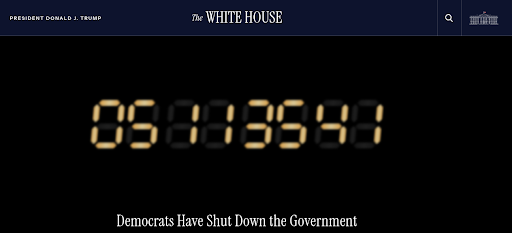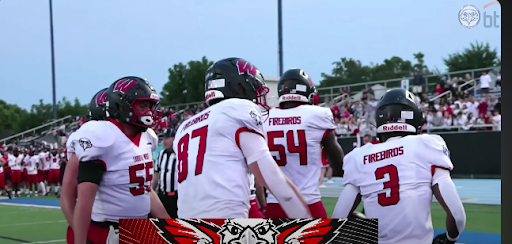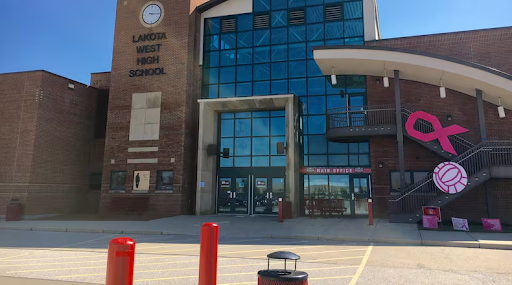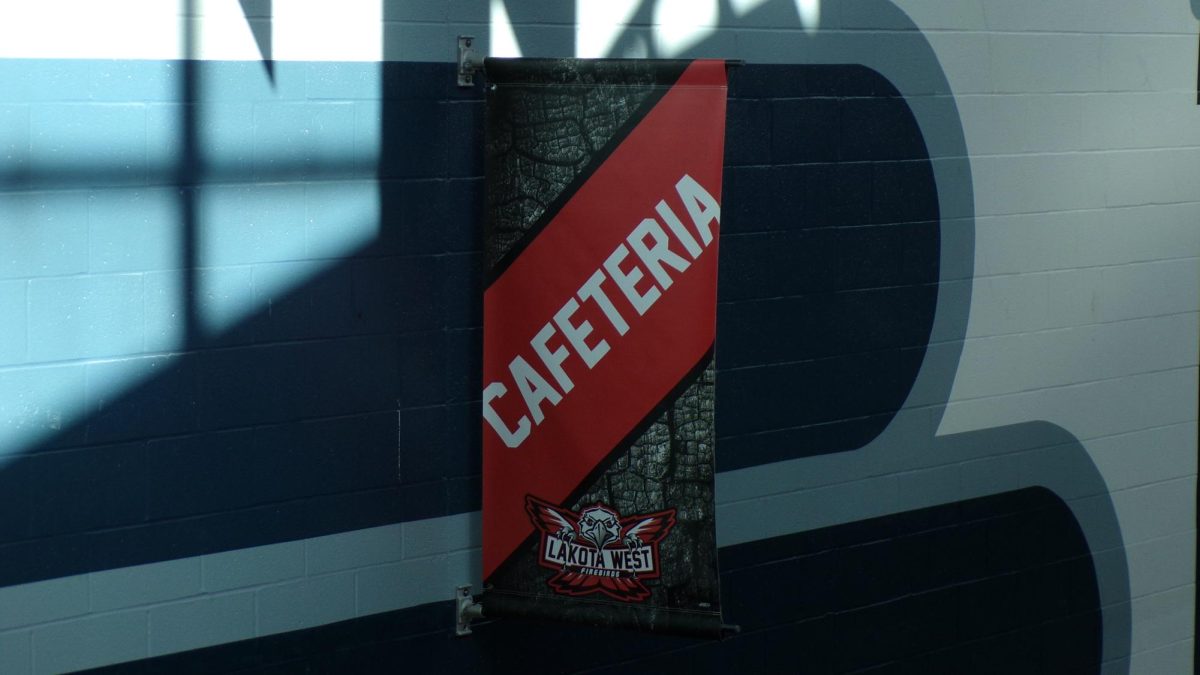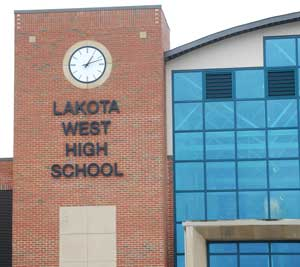Over the last three years of writing for The West Press, I have not hidden my frustrations with the administration of Lakota West High School. From poor traffic rules to a messy high school curriculum, I’ve done my best to shine a light on the flaws of our school and offer ways to correct them. As one of my final articles, I’d like to compile all my complaints and offer one final opportunity to fix Lakota West.
Calculators in the Classroom
Starting simple, we turn to our Lakota West math classes; specifically, we need to address a calculator issue. A single calculator can solve so many problems and make memorizing formulas a thing of the past. Teachers, however, have often decided to limit calculator usage during assignments and tests. This is, unfortunately, a hindrance to students’ futures. If a graduate from Lakota West enters the workforce and needs to complete a difficult equation, their boss will never say to them, “Your calculator is not allowed to be used when completing this problem.” Using the calculator would allow a more guaranteed answer, with a much lower chance of human error. Teachers should take the time they spend making kids memorize formulas and instead show students how to use all of a calculator’s functions. What is the matrix button? What is the rcl button? Some of these features have never been used in class, and if students must pay 110+ dollars for a calculator, they should get to know how ALL of it works. There is no reason students should have to spend that much money on something, only to use it once every few days in a class. There must be a change in how we teach with calculators: if Lakota wants students to be prepared for the real world, they should make sure teachers are providing students with all the tools necessary to perform well, which includes understanding how to use a calculator to its fullest.
Graduation Requirements
Graduation requirements have also become an ever-growing issue. Seals, grad plans, SchooLinks, what more do we need to do in order to graduate? SchooLinks, for example, is an app that students use to apply to colleges, fill out senior information, and keep the school in the loop for their plans outside the district. This app, however, is often neglected by students. With its huge amount of features that students don’t use, SchooLinks becomes yet another thing graduating seniors need to keep track of. The “to-do list” students are supposed to complete often has unnecessary tasks that the school doesn’t actually need, nor do students need to make a decision on where they will go to college. Heck, some kids aren’t even going to college after their time at Lakota West! To fix this, there needs to be an easier way to get seniors the information they need, and clarify what is required and what isn’t. SchooLinks works well for applying for classes, but even then, students have said it did not improve their experience compared to using HAC for registration. The overall platform SchooLinks has is difficult to understand, and clarity must be provided so students know what is crucial to do and what isn’t. Seniors proved that with their “senior end of year survey,” which forced the school counselors to go into a panic when only 200 of the 700 seniors had completed the survey just one week before their last day of school.
Lakota West Curriculum
One of the most challenging issues the students of Lakota West face is the ongoing changes to their curriculum. Not only have teachers expressed their frustrations towards new textbooks being required, but students have also shown a disinterest in certain subjects and their required courses. For example, someone who is majoring in journalism (such as myself) will likely not need to take a math class past basic algebra and geometry. Unfortunately, the curriculum requires students to take four years of math classes: Algebra I & II, Geometry, and a fourth option left up to students (most take Pre-Calc). If I will never use math in my life except for certain instances, why should I have to memorize formula after formula, only for me to forget them within a week after the test? The same goes for someone interested in architecture or construction: Why should they have to spend years analyzing 1600s Shakespearean writing when they could be taking an additional modeling or design class? By removing unnecessary classes, students have more opportunities to hone in on their specific interests, better preparing them for a personalized future. Of course, there is no easy way to remove core classes, they exist for a reason. One option the school could take is sitting down with individuals who are confident in their future (college, workforce, military, etc.), and creating a new required curriculum for them, personalized to their career choice. This would have to be confirmed by both the school counselors and the student’s parent/guardian in order to prevent any kind of slip-up. If the student proceeded to change their mind or slip in their grades, then they would be required to revert back to the original, present-day curriculum. I highly encourage you to check out my full article covering this, entitled “Curriculum Controversy: Do I Really Need to Learn This?” to get a more in-depth understanding of possible changes Lakota (and the state of Ohio) could make.
XH (“Xtra Help” bell)
If Lakota is notorious for one thing, it’s making last-minute changes that benefit no one. Whether it be the XH (Xtra Help) schedule/location changes throughout the last three school years or changing the class registration portal to be on SchooLinks, the administration seems to be in the habit of fixing things that weren’t broken. One prominent issue in the last few years has been the movement of students during XH. During the 2023-2024 school year, XH would occur in your 6th or 7th bell, swapping locations between Wednesday and Thursday. This year, XH is based on your grade and last name. The concept is for students to remain with the same XH teacher throughout the entirety of their time at Lakota West, helping to build trust between students and staff, as well as allowing your XH teachers to possibly write a letter of rec. For you during your senior year. This logic, though, is flawed. Why would a study hall teacher ever have the adequate information (or desire) to write students a letter of recommendation when almost all of the kids would be sitting silently in their room doing homework for three years? And, should XH be used properly, the students would never be in the classroom, but instead get help from their actual teachers. Speaking of the purpose of the “Xtra Help” bell, there have been many times when XH has been on a “no-pass” status, meaning students were not allowed to visit other teachers to get assistance on work. This typically happened around exam season, a distinct issue for students who may be trying to seek guidance as they prepare for an end-of-semester exam. By blocking students from travelling (the entire purpose of the 40-minute bell), their time spent sitting around can easily go to waste. The logic behind the study hall is fundamentally broken when the administration decides to be so tight about the passing time between classes, which days people can leave, and how difficult it is to even be in the halls. To fix this, XH needs to be a free-roam period: something administration (in its current form) would loathe the idea of. That trust of students to go where they need to would make the core idea of XH worth sitting around in, even when half the students neglect the time to sit on their phones, play games, procrastinate, and so on.
Block Days and XH
Block days, however, destroy the purpose of XH. Right before the XH bell on Thursdays, students have a nearly 60-minute period of “advisory” due to a repeated 5th bell on each block day. Because of this, students often would go to lunch, have advisory for an hour, then travel to XH and study for an additional 45 minutes, and finally (nearly two hours later) resume their day with 6th bell. The logic behind that many study halls is non-existent: The administration can say over and over to “use your time adequately,” but they know students won’t listen! By telling students not to do something, they will persistently find a new loophole or way to break the system. Nothing happening within the halls of Lakota West High School requires nearly two hours of study hall time. Instead, this could be used for a late arrival on block days (something that could encourage students to come to school in the first place). They could also reuse that time to host practices, club meetings, or other events that would influence students to become involved with extracurriculars. Students not in an extra-curricular would have to stay in the cafeteria, whereas students in clubs or sports could meet in their designated room to work on projects, lessons, or whatever else that club is interested in. This would make participation in a club much more enjoyable and encourage students to interact more with one another, not just through their phones or group assignments.
Locked Bathrooms
The Main Campus bathrooms are yet another issue that students have been directly affected by. To preface this, I will reference a quote from Lakota West Principal Scott Laman during my one-on-one interview with him at the end of the 2024-2025 school year, entitled “Exclusive Interview: Lakota West Principal Scott Laman.”
Thomas: I want to ask about closed bathrooms around the building. What is the decision process between keeping some bathrooms open and closed?
Laman: The reason why certain ones are closed is because there’s a leak: a plumbing issue, and unfortunately, those take time to fix. Sometimes it means students have to be out of the building. Some of it involves taking walls out, getting machinery in… it is not a matter of trying to shut down bathrooms because I don’t want people to use the bathroom.”
Because of plumbing issues within the building and burst pipes, many bathrooms around the building have been locked and gated off. This problem, however, isn’t fresh: it’s been a pre-existing problem since January 2024. We also know it wasn’t due to a “plumbing issue” but instead caused by staff trying to discourage vaping in the restrooms. Some days, certain bathrooms would be locked, with gates barricading them. Just days later, however, these same bathrooms would be unlocked as though there had never been an issue to start with. With a school that already comprises of over 2000 students, trying to close bathrooms is a serious issue, especially when teachers are strict about not using the bathroom during their classes. In fact, the administration decided students were not allowed to use the restrooms during the first and last 10 minutes of each bell. If a student really needs to use the restroom, they should be able to use it; just because some crappy students decide to make the wrong choices doesn’t mean everyone else should have to suffer the consequences. I will go further into the disciplinary strategies Lakota employs in the section directly after this.
These bathrooms aren’t just closed because of vaping, though! On the arts side of the building, both bathrooms are closed to be “teacher restrooms.” Considering the ratio of students to teachers using the bathroom in the building, there is no reason the only two bathrooms on one side of the building should be closed, only to be used a few brief times by teachers each day. For every one teacher who uses those bathrooms, there are nearly 40 others who could have had that opportunity to relieve themselves. Instead, they are forced to walk to the other side of the building, and even then, they may have to walk further to avoid gated-off bathrooms. On top of that, every second a student spends outside the classroom, the more valuable information they are missing out on, something the administration seems to care very deeply about, as evidenced by their increasingly strict guidelines on when students can be out of class. This also plays into the “10 minutes after and before the bell rings” bathroom restrictions: the most important time during a bell is the middle of it, that’s when the bulk of teaching takes place. The first and last few minutes of class are often the introductory and “here’s your homework tonight” minutes. Of all the times to leave, that would be the least infringing on a student’s academic experience.
Defining Discipline
The administration’s attempt at controlling the student body of Lakota West comes down to a “if one person messes up, everyone will receive the punishment” mindset. This includes locking bathrooms, hall passes, using XH for its original, intended purpose, and even going to the hub to work on a project. This mindset fails and points out its flaws loud and proud for all to admire. The admin team seems to think that punishing everyone for a few people’s mess-ups will mean people will stop. Not every student at Main Campus knows each other super well; because of this, when someone messes up, it’s not like we all are going to bully those people out of doing it. These people will continue to do it, and others will follow. The High School admin team needs to focus on the few people causing the issues, not everyone. Understanding the student’s actions and the motivations behind those actions needs to become priority #1. By understanding them, you’ll learn why they get in trouble, how to help them get back to the right place, and how to accommodate their needs correctly. Students aren’t going to get better if you just push them out: you need to go to the root cause of the problem. Blaming over 700 people for a significantly smaller group of people’s problems isn’t fair. It’s just like being placed in a CP class, or an Honors class: We give people the proper treatment because some of them would simply find CP too easy, and need to learn something different that matches their education level. This mindset of different levels of discipline needs to be applied to the students of West. Most students aren’t the problem; In fact, many end up becoming part of the solution. Main Campus Admins have got to start finding the root of the problem and quit blaming everyone. It’s not fair to the good kids who are just trying to achieve academically when they lose privileges because of a few other people.
The other big issue is Lakota’s habit of focusing on the wrong stuff: Instead of closing half the bathrooms, why don’t you take the people being paid to roam the building and make them do occasional bathroom checks? Instead of worrying about people painting/having cones in their parking spots a few days late, why don’t you worry about the huge number of students who didn’t pay the 20-dollar donation to paint in the first place? (I can attest to that one!) Why does Lakota spend more time tracking down people who skipped 15 minutes of class than the people who have skipped full days of school with no answer? Students are getting tired of new rules being applied every year. If you want students to show up to school and do well, making Lakota West High School feel like a high-security prison with precautions for every step you take isn’t the solution. All it takes is spending more time finding the root of the problem, focusing on the right stuff, and letting the majority of the students be. It’s time for Lakota to get its act together and figure out how to discipline students.
Traffic Rules and Regulations
Unlike previous issues presented, there is very little to say about the traffic rules, as Lakota has actively reverted many of its poorly thought-out changes. I still do, however, recommend you read my full article, “Wrong Turns Only: Lakota West Traffic Rules Miss the Mark,” to learn more about the misguided logic of the main campus traffic guidelines introduced in January 2025.
School Spirit
The issue of school spirit has resonated deeply with hundreds of students at Lakota West. My article, “School Spirit: An Unexcused Absence from Lakota West,” received tremendous support, with many students telling me they felt it voiced issues that the student body had faced over the last few years. One way Lakota helped build school spirit was through traditions. In the ’80s through the early 2000s, a giant bonfire was held before each football game, with the West Chester Fire Department helping to monitor the fire and allow students to hang out around it before and after games. Students also made a large “doll” often branded after the opposing school’s mascot, and would throw it into the fire before the game to remind opponents whose “territory” they were entering. Pep rallies were a normal occurrence, and students ALWAYS showed up to be in the student section. These days, only the big games get much of a turnout. Unfortunately, there are two things Lakota values over education: safety and discipline. Both of these, in one case or another, have been conducted so inadequately over the last few years. The goals of Lakota are no longer to provide students with an ENJOYABLE high school experience, but instead to get them out of Lakota and see the school’s annual graduation rate go up. Lakota has lost any sense of the “experience” so many students are looking for: If you want your kids to show up for school, you have to give them reasons! We live in a world where it is increasingly easier to do your work online, from the comfort of your home. What is going to motivate people to come to Lakota West? Why are we trying to deny the fact that being at Lakota West sucks unless you have classes with your friends?
It doesn’t help that many of our teachers aren’t willing to participate or even accept these school events. During pep rallies, you may notice that the same teachers tend to participate each year. So many educators become too enveloped in their work to try to engage with students outside of the classroom. West is, however, still capable of being a fun place, just not in its current capacity. Although I agree that students should do some work to organize school events, the administration could also step up and try to fulfill its role of making our high school experience memorable. Safety and discipline are important, but no one will look back at their high school time with happiness if it felt like the administration was trying to lock down any sense of freedom. These are simple requests, and there are completely feasible options to make these events happen. By returning school spirit, the livelihood of the building and the motivation to come to school will make the experience of entering Lakota West much more memorable.
Sadie Hawkins Needs to Go
My final critique stems from the near-failure of the 2024 Sadie Hawkins Dance. Due to a low ticket turnout, the event was threatened to be cancelled and the work of the National Honor Society thrown in the trash. There are multiple reasons this was the case: the theme, “Tangled,” was lackluster and didn’t invite many creative liberties for students to indulge in. The concept of Sadie Hawkins is also incredibly outdated. It stems from the idea of the woman asking the man to the dance, a tradition that no longer means anything to students in 2025. Instead, the dance should be rebranded as a Winter Formal. This dance would be new, fresh, and get students interested in what the dance would be like. The National Honor Society would also have less risk of spending money, as many of the decorations could be reused each year. One benefit of hosting a dance without a theme is a clear, repetitive color palette that students can rely on each year. By reusing old dresses or knowing what you need to buy, the hassle and rush of coordinating with your friends or your date becomes much simpler. Plus, it allows passionate students to try and one-up their look each year. Should the dance go well, maintaining the same colors and branding would allow for a solid, reliable image that students can trust with each new year. There won’t be any concerns of “I hope the Winter Formal is good this year” if the NHS can manage to maintain a sustainable, enjoyable experience each school year. The dance should also take place around the beginning or middle of February to avoid the excitement (and possible distraction) of the prom theme being announced in early March.
Fixing Lakota West, Once and For All
It has been a distinct honor to write criticism after criticism of Lakota West over my three years at the main campus. Although I have been incredibly scrutinizing the administration and staff, it all comes from a place of love: I simply want to see the school do well and allow for students to create memories that will last a lifetime. Although it is crucial to provide students a safe and educational experience, the fun factor of being a kid must be maintained throughout the entirety of the high school journey. I sincerely hope the administration of LWHS can reconsider many of the things they are currently controlling and look for ways to provide concise, thought-provoking, and exciting opportunities and information that will make the Lakota West experience one to remember for decades to come.





